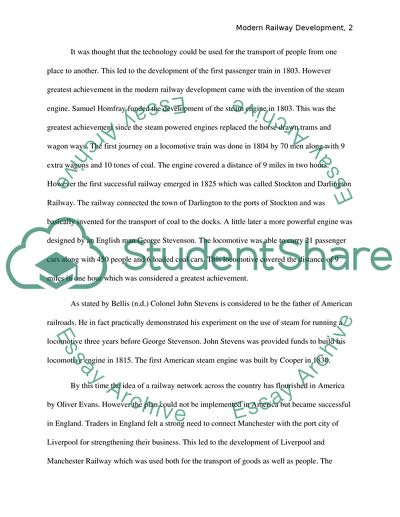Cite this document
(Modern Railway Development Assignment Example | Topics and Well Written Essays - 1250 words, n.d.)
Modern Railway Development Assignment Example | Topics and Well Written Essays - 1250 words. Retrieved from https://studentshare.org/engineering-and-construction/1543329-modern-railway-developments
Modern Railway Development Assignment Example | Topics and Well Written Essays - 1250 words. Retrieved from https://studentshare.org/engineering-and-construction/1543329-modern-railway-developments
(Modern Railway Development Assignment Example | Topics and Well Written Essays - 1250 Words)
Modern Railway Development Assignment Example | Topics and Well Written Essays - 1250 Words. https://studentshare.org/engineering-and-construction/1543329-modern-railway-developments.
Modern Railway Development Assignment Example | Topics and Well Written Essays - 1250 Words. https://studentshare.org/engineering-and-construction/1543329-modern-railway-developments.
“Modern Railway Development Assignment Example | Topics and Well Written Essays - 1250 Words”, n.d. https://studentshare.org/engineering-and-construction/1543329-modern-railway-developments.


